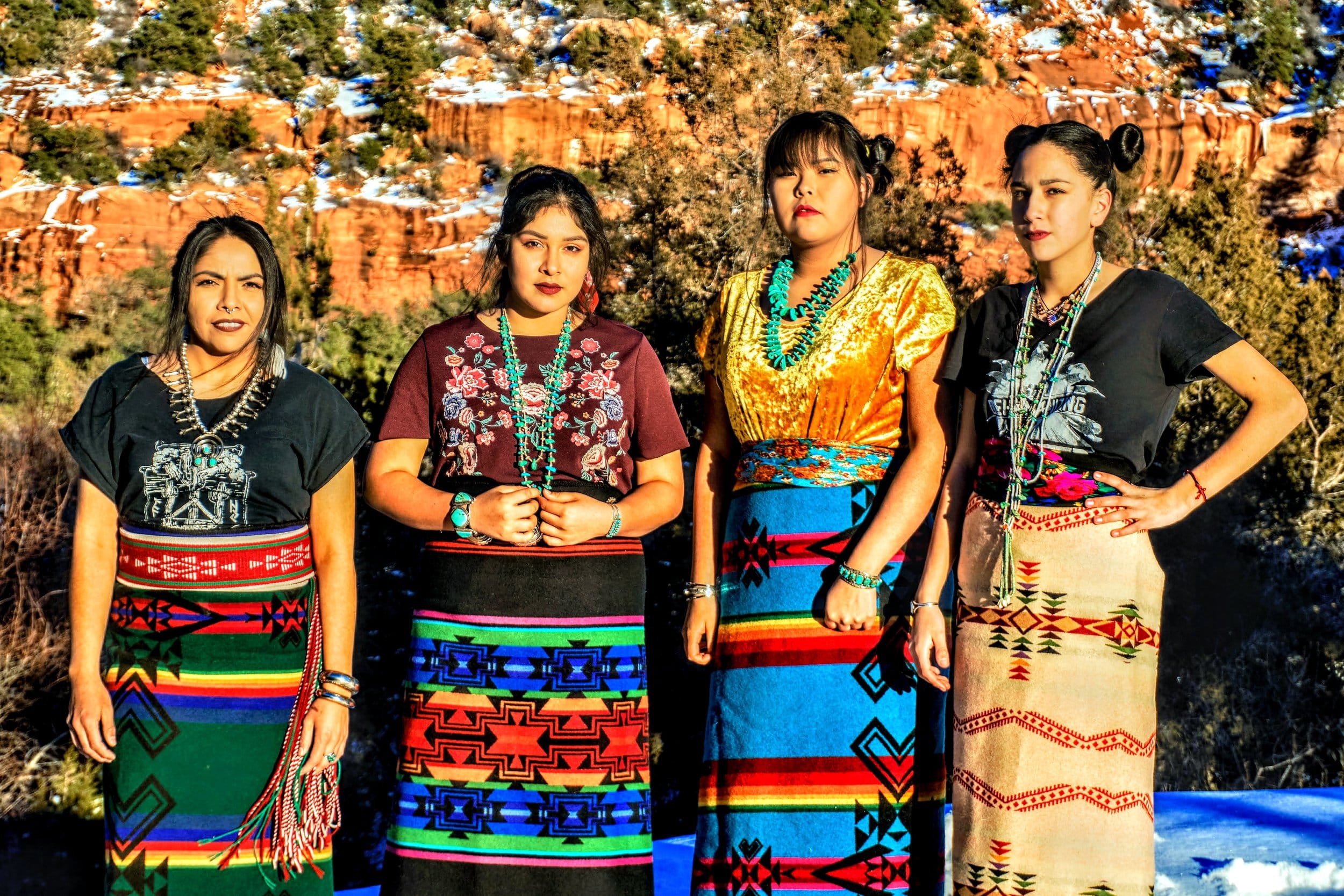Embracing Womanhood: The Navajo Kinaaldá Ceremony
The Navajo Kinaaldá is a vibrant and deeply meaningful coming-of-age ceremony celebrating a young woman’s transition into adulthood. This sacred ritual, steeped in tradition and rich symbolism, marks a girl’s first menstruation and her journey into womanhood. More than a mere “birthday party,” the Kinaaldá is a powerful affirmation of Navajo identity, linking the young woman to her ancestors and the enduring legacy of her people. It’s a testament to the power of tradition to shape lives and strengthen communities.
The Four-Day Transformation: Rituals and Symbolism
The Kinaaldá typically unfolds over four days, a sacred time filled with symbolic activities and profound teachings. This carefully structured period mirrors the transformative journey of Changing Woman, a revered figure in Navajo mythology who embodies the power of creation and renewal. The ceremony draws a parallel between the young woman and Changing Woman, empowering her with wisdom and courage as she embarks on her own path of growth.
Key Moments of the Kinaaldá Ceremony:
- Running: Each morning, the young woman runs towards the east, symbolizing strength, endurance, and the rising sun. This act echoes Changing Woman’s own powerful runs and reinforces the importance of physical and emotional resilience in a woman’s life.
- Corn Grinding: This essential act represents the young woman’s connection to the earth, her ability to provide sustenance for her family, and her role within the community. It is a tangible link to the agricultural traditions that have sustained the Navajo people for generations.
- Singing: Traditional songs, filled with prayers and blessings, are woven throughout the Kinaaldá. These melodies carry the wisdom of ancestors and invoke positive energy for the young woman’s future.
- Baking a Special Cake (Alkaan): A large corn cake, known as alkaan, is meticulously prepared and shared with the community. This act symbolizes abundance, generosity, and the young woman’s capacity to nourish and care for others. This cake is more than food; it’s a symbol of community and prosperity.
- Hair Combing: A respected elder woman carefully combs and styles the young woman’s hair, often in a manner resembling a butterfly. This act represents the passing down of wisdom, the continuation of tradition, and the beauty of transformation.
- Dressing in Traditional Clothing: Adorning herself in traditional attire marks the young woman’s official entry into womanhood. These garments, often imbued with intricate designs and symbolism, connect her to the rich tapestry of Navajo artistry and heritage. They are a visible link to the generations of strong women who came before her.
The Spiritual Heart of the Kinaaldá: Hózhó
The Kinaaldá is more than a series of rituals; it’s a deeply spiritual journey. It aims to instill hózhó—a Navajo concept of balance, harmony, beauty, and well-being—into the young woman’s life. This spiritual grounding prepares her for the challenges and joys that lie ahead, fostering inner strength and resilience. The ceremony is a kind of spiritual rebirth, aligning her with the natural world and the values of her community.
Community as Catalyst: Support and Guidance
The Kinaaldá is not a solitary experience. The entire community—family, friends, and respected elders—plays a vital role. Their presence, support, and guidance are crucial. They offer wisdom, share stories, nurture the young woman’s growth, and reinforce her sense of belonging. This communal embrace strengthens the social fabric and underscores the interconnectedness of Navajo life.
The Kinaaldá in Modern Times: Adapting and Thriving
While the core elements of the Kinaaldá remain timeless, the way it is celebrated has probably adapted over time. Some families may observe a shorter version due to modern constraints, while others might incorporate contemporary elements. Like any living tradition, it evolves while retaining its essential meaning. The important thing is that the spirit of empowerment and connection to tradition lives on, empowering young Navajo women to navigate the complexities of the modern world.
You can trace the roots of human civilization to ancient cities like the Iraqi city on the Tigris or the mysterious K2 megalith. These ancient sites suggest the enduring human need for ritual and connection, a need that finds powerful expression in ceremonies like the Kinaaldá.
The Changing Woman Narrative: A Foundation of Strength
The Kinaaldá is deeply rooted in the story of Changing Woman, a central deity in Navajo cosmology. She embodies creation, fertility, and the power of womanhood. Changing Woman is believed to have undergone the first Kinaaldá, establishing it as a rite of passage for generations to come. The ceremony links each young woman to Changing Woman’s strength and transformative power, reinforcing the idea that they too can bring life and beauty into the world.
The Kinaaldá and Matrilineal Lineage
The Navajo are a matrilineal society, meaning that clan affiliations and inheritance are traced through the mother’s line. The Kinaaldá reinforces this tradition, highlighting the importance of women within the family and community structure. The ceremony recognizes the young woman’s place within this powerful lineage, connecting her to the generations of strong women who preceded her. It’s a powerful affirmation of female strength and leadership within Navajo society.
Ongoing Research and Evolving Understanding
Researchers continue to study the Kinaaldá, exploring its historical evolution and contemporary practice. Some scholars suggest that the ceremony’s focus on physical endurance, as seen in the running rituals, may have historical links to the demands of traditional Navajo life. Others emphasize the spiritual and psychological aspects, highlighting the ceremony’s role in empowering young women and fostering a sense of cultural identity. There is likely a rich diversity of interpretations within the Navajo community itself, and our understanding of this complex ceremony continues to evolve.
The Kinaaldá: A Living Legacy
The Kinaaldá is a testament to the resilience of Navajo culture and the enduring power of tradition. It is a celebration of life, heritage, and the transformative journey from girlhood to womanhood. By honoring the past, the Kinaaldá empowers the future, ensuring that young Navajo women inherit a legacy of strength, wisdom, and cultural pride. It serves as a powerful reminder of the vital role that ritual and ceremony play in shaping individual lives and strengthening communities.
- Mastering Leader in Spanish: The Complete Guide - April 19, 2025
- Uncovering Surprising Parallels: England Size Compared to US States - April 19, 2025
- Old Mexico Map: Border Shifts 1821-1857 - April 19, 2025
















